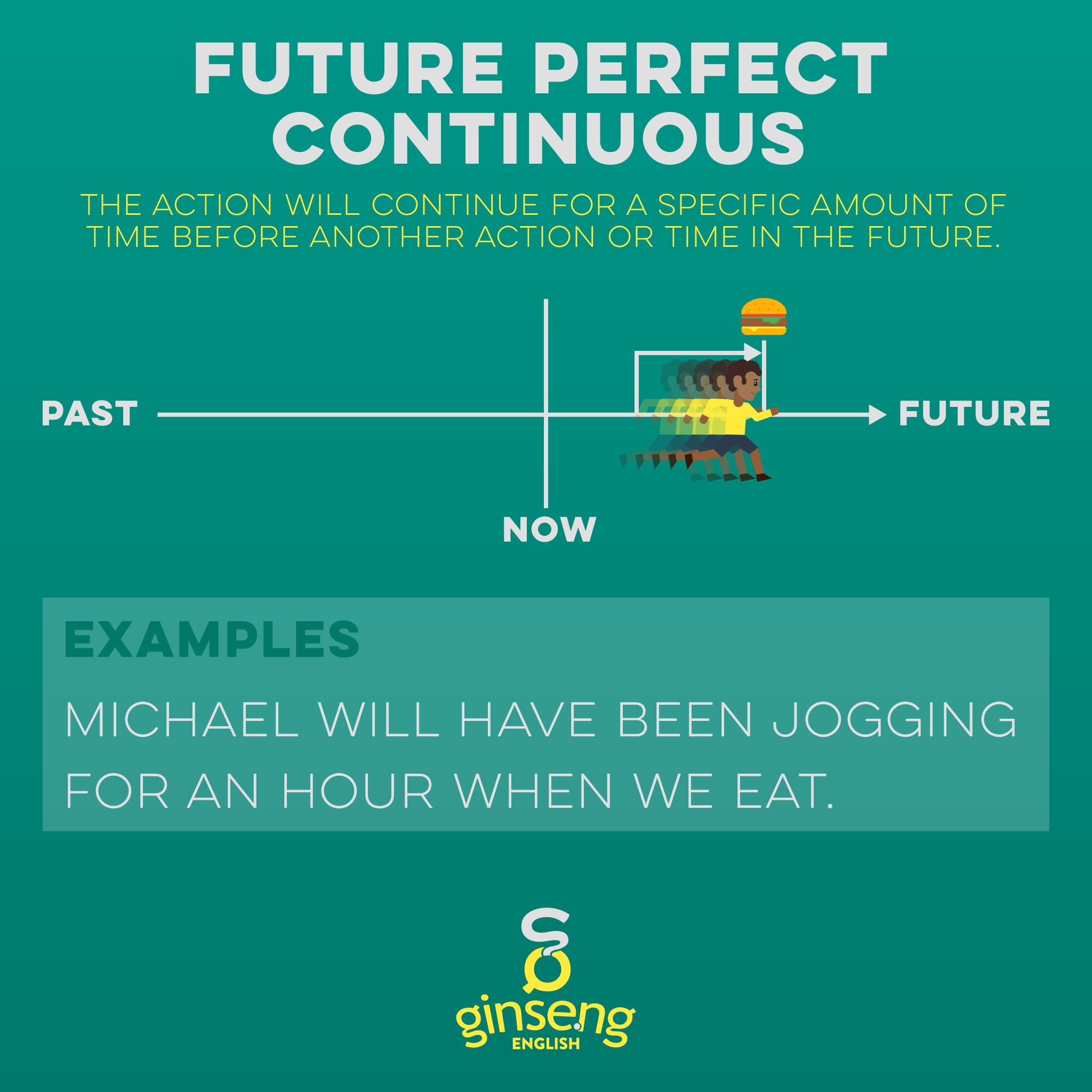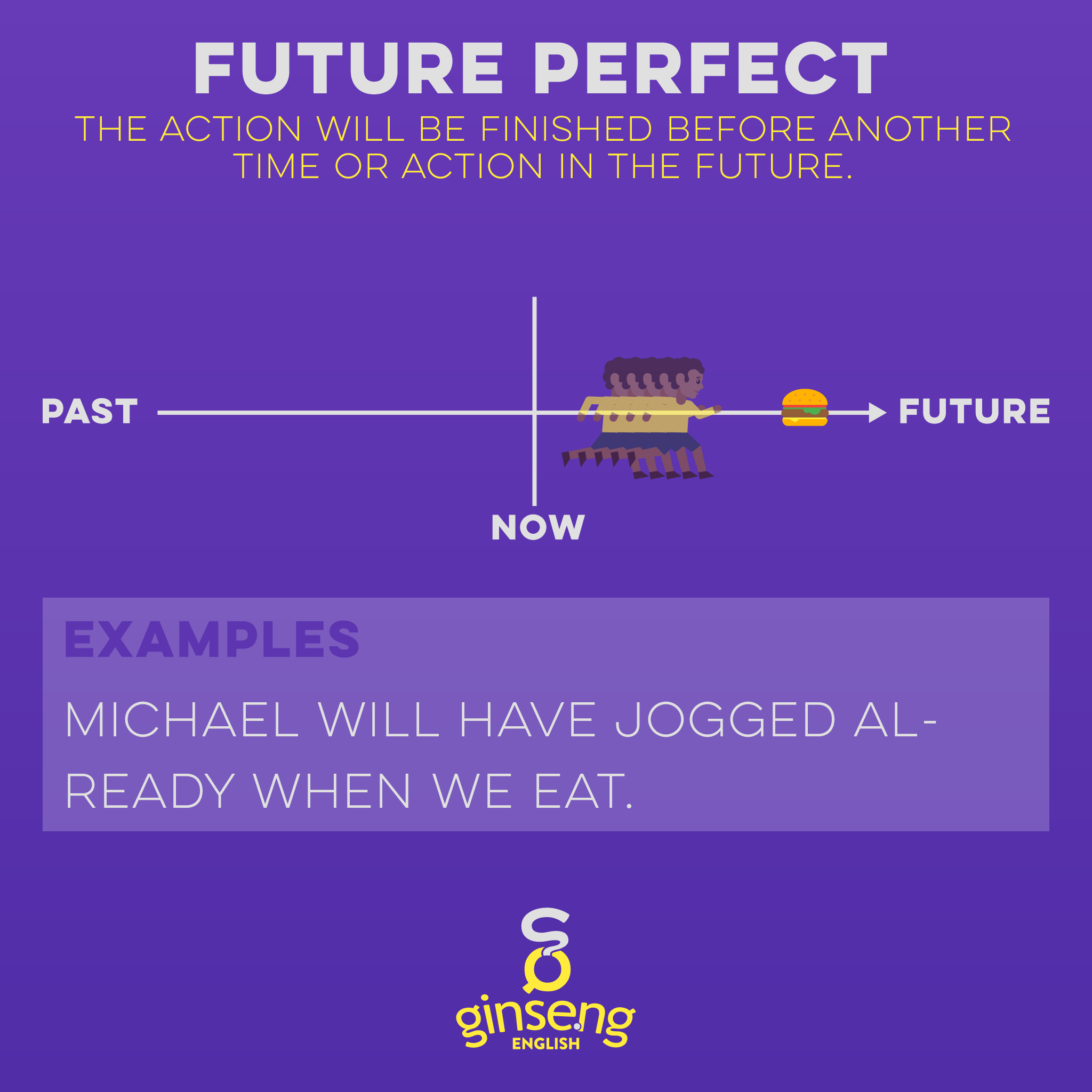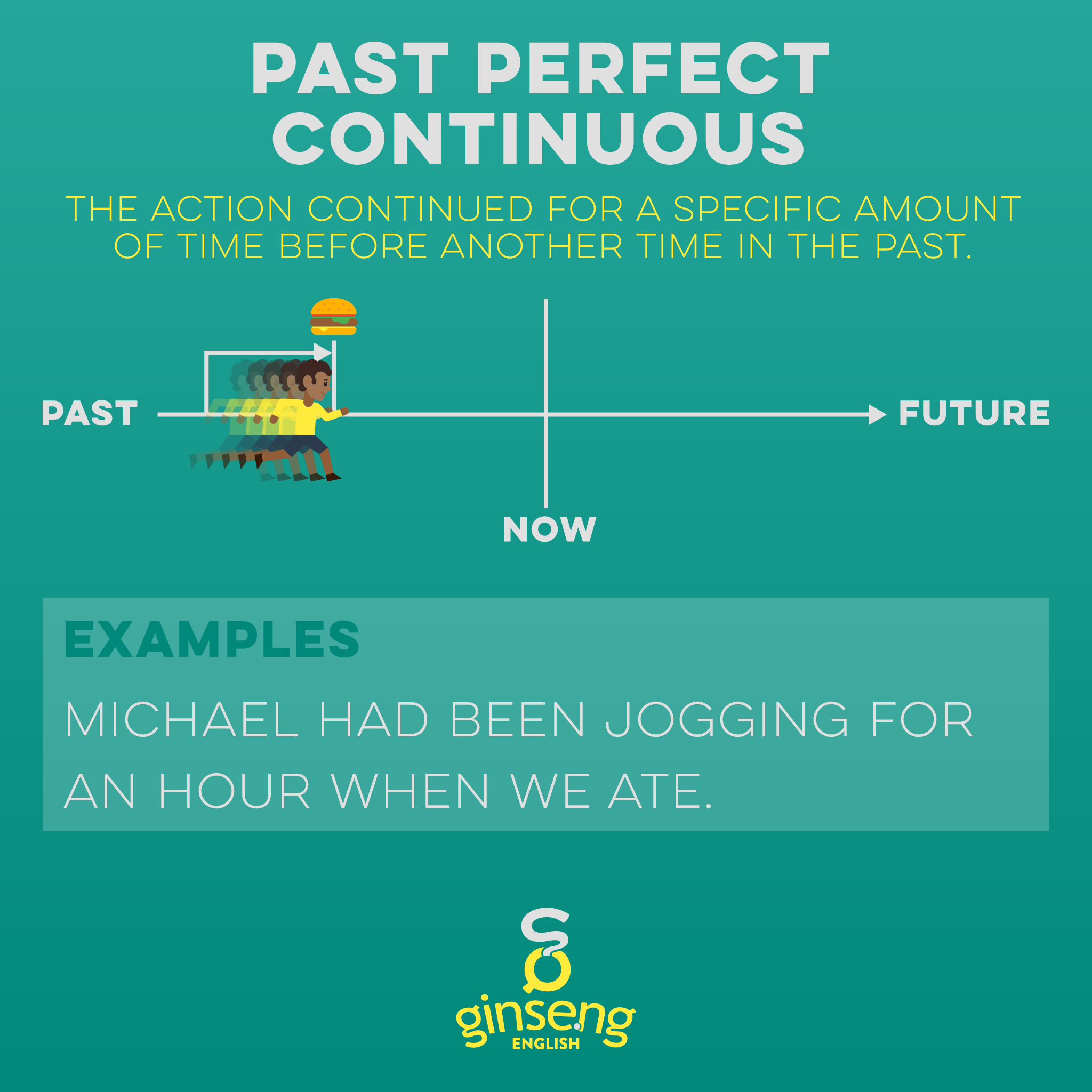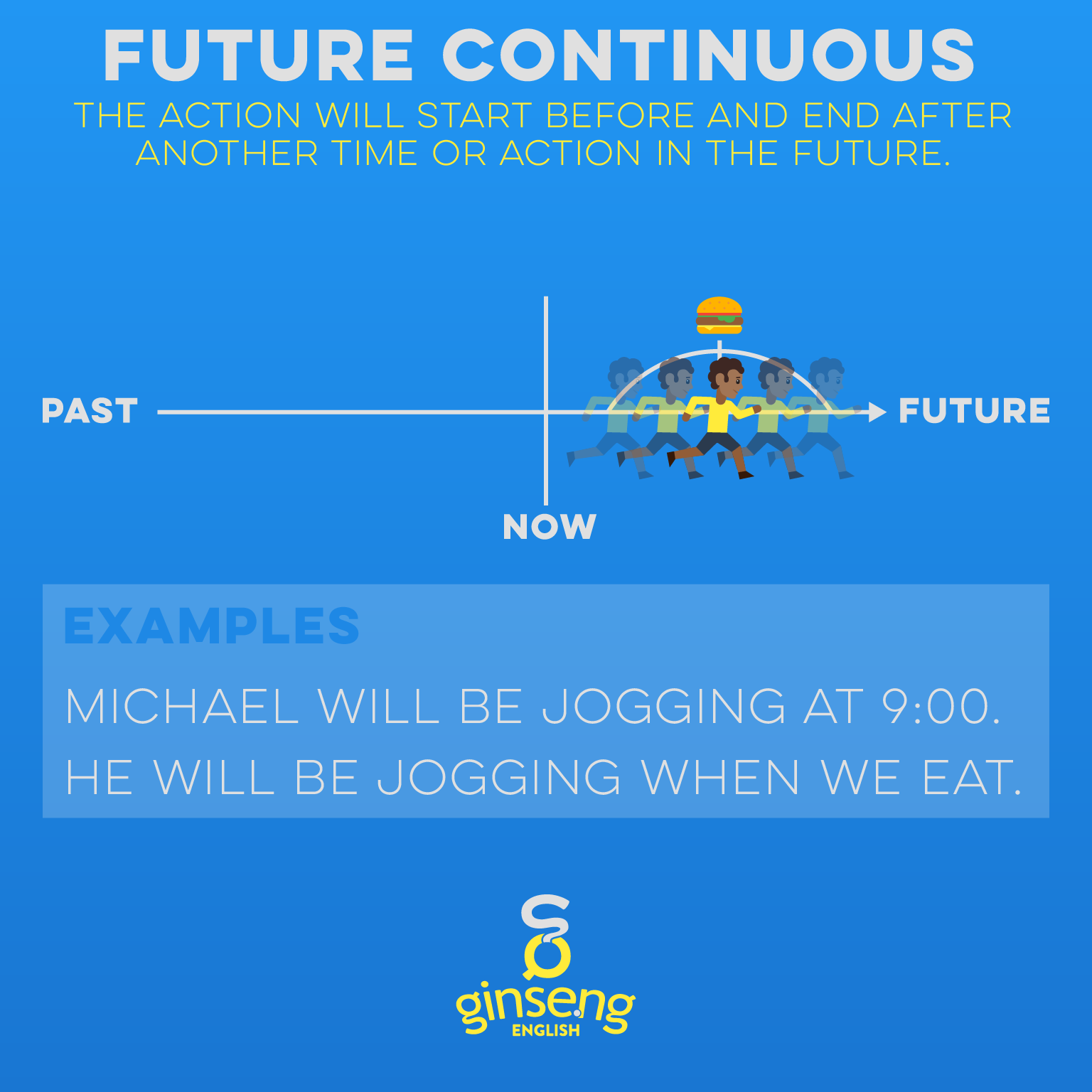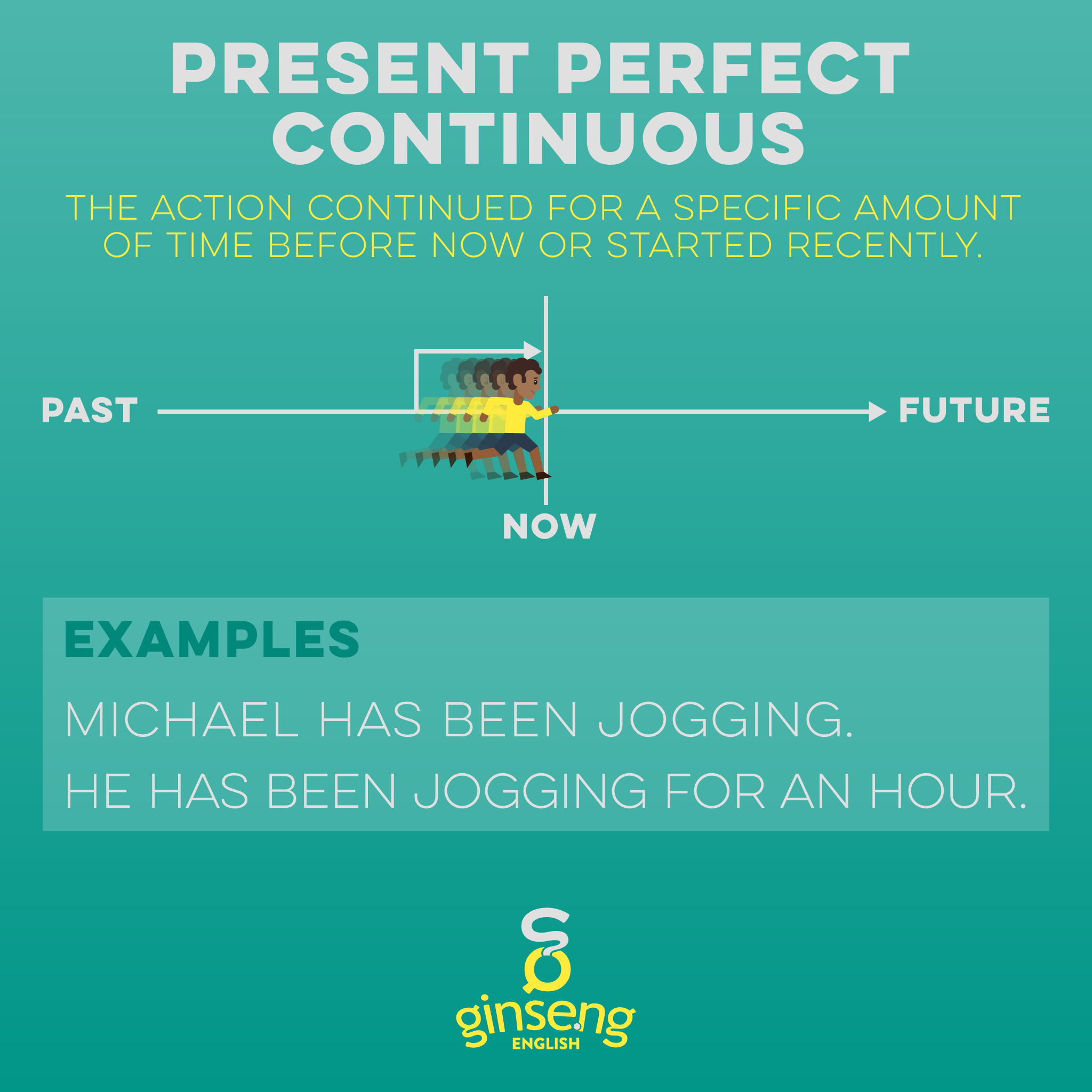The future continuous (also called the future progressive) is an English verb form used to describe actions that will be in progress at a particular moment in the future. This can be a time or date, or it can be another action.
This is not a common verb form. Less than .1% of English verbs are in the future continuous.
Keep reading to learn the rules and reasons for using and forming the future continuous, including loads of charts and examples!
It is important to realize that continuous and progressive are different names for the same thing. In some places, progressive is more common, but continuous is a more common term overall.
USing the Future continuous
When we see a continuous verb, it tells us that something is in progress at a particular time. With the future continuous, that time is in the future. This can be a time or date (next weekend, tomorrow at 5, on November 3rd) or it can be another action in the future.
Chart for Future Continuous Tense In English
Here are some example sentences:
Don’t call her at 8. She will be flying to Denver then.
I will probably be running when you come home.
Try to be quiet when you come home tonight. Everyone will be sleeping.
In these examples, the continuous action (will be flying, will be running) will start before the other specific action (come home) or time (at 8), and continued after that action or time.
We can also use the future continuous to show that a future action will continue over a period of time.
I’m going to be studying all next week.
We will be traveling for most of 2019.
Forming the Future continuous
There are two options for forming the future continuous: will or going to.
Formula With Will
To form the future continuous with will, use will be and the continuous form of the verb, with -ing.
subject + will be + VERBing
Conjugation with Will
Here is a complete conjugation table:
| Singular | Plural | |||
|---|---|---|---|---|
| 1st person | I | will be working. | we | will be working. |
| 2nd person | you | will be working. | you | will be working. |
| 3rd person | he | will be working. | they | will be working. |
| she | will be working. | |||
| it | will be working. | |||
Formula With Going To
To form the future continuous with going to, you need to use the correct present form of the verb to be (am/is/are). Then use going to be. Then use the -ing form of the verb.
subject + am/is/are + going to be + VERBing
Conjugation with Going to
Here is the going to conjugation table:
| Singular | Plural | |||
|---|---|---|---|---|
| 1st person | I | am going to be working. | we | are going to be working. |
| 2nd person | you | are going to be working. | you | are going to be working. |
| 3rd person | he | is going to be working. | they | are going to be working. |
| she | is going to be working. | |||
| it | is going to be working. | |||
Other Forms
Questions
In the future continuous, you have more than one helping verb. To make a question, move the subject after the first helping verb (be or will).
Will you be eating out tonight?
When will you be arriving in Philadelphia?
Are you going to be sleeping when I get home?
What are you going to be reading next semester?
Negative Sentences
To form a negative, insert not after the first helping verb (be or will).
I will not be eating out tonight.
She will not be running.
We are not going to be reading Nabokov.
I am not going to be sleeping when you get home.
The Passive Voice
Making a passive sentence in the future progressive is extremely complex and extremely rare. In the conventional passive, putting be in the future progressive results in the unnatural combination of be and being: …will be being… or …going to be being…
For this reason, we recommend using the get passive in the future progressive. Put get in the future progressive (is going to be getting, are going to be getting, will be getting) and then the perfect form of the main verb.
We are going to be getting picked up by my mom.
If we miss another payment, we’ll be getting kicked out!
CHECK OUT THESE OTHER FREE GRAMMAR RESOURCES:


